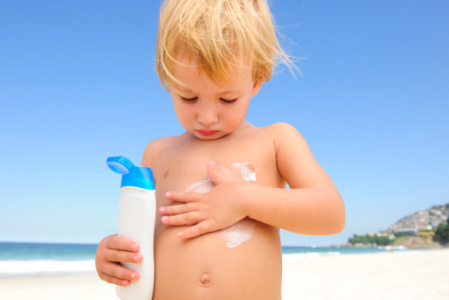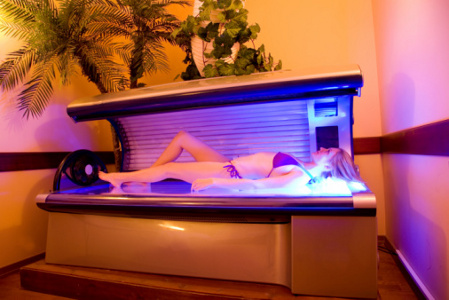Protect Your Skin In The Sun
0 Comments
Time of Day Matters
In the continental United States, the hours between 10 am and 4 pm are the most hazardous for exposure to the sun’s ultraviolet rays. In North America, UV rays are the greatest during late spring and early summer. You are exposed to UV rays on cloudy and hazy days as well as bright and sunny days. Ultraviolet rays reflect off water, concrete surfaces, sand and snow. Limit your exposure to the sun during these peak hours. If you must be outdoors, seek shade, wear protective clothing and use a sunscreen product liberally. Photo: Getty Images

Know the UV Index
The National Weather Service and the United States Environmental Protection Agency developed the UV Index. It provides a daily forecast of the expected risk for exposure to the sun. Based on a scale from one to 11+, the UV Index is calculated on a next day basis for every zip code in the United States. To reduce sun-related damage, pay attention to the UV Index in your area. Photo: Getty Images

Everyone Needs To Protect Their Skin
Everyone, from fair-skin to dark skin, needs skin protection against the sun’s invisible ultraviolet rays. Sunlight contains three types of ultraviolet rays; UVA, UVB and UVC. UVA rays lead to premature skin aging and contribute to skin cancer, such as melanoma. UVB rays cause sunburns, cataracts and contribute to skin cancer. UVC rays are the most dangerous and are blocked by the ozone layer. Melanin is your body’s protective defense against the sun’s ultraviolet rays. It absorbs the dangerous rays before they cause damage. Melanin concentrations vary among skin tones with lighter skinned individuals having lower concentrations than people with darker skin. Photo: Getty Images

When, Where and How to Apply Sunscreen
Sunscreens contain chemicals that interact with your skin to protect you by absorbing, reflecting or scattering sunlight. Choose a product with an SPF of at least 15. Higher SPF indicates higher protection. SPF 30+ is recommended for children 6 months of age and older. Apply sunscreen 15 to 30 minutes before going outdoors and reapply often. The American Academy of Dermatology recommends reapplying every 2 hours and after swimming. Generously apply the product to all exposed skin, as well as under bathing suit straps. Be sure to protect your lips with lip balm containing SPF. Remember to apply sunscreen to the outer ears, back of the neck, hands and feet. Photo: Getty Images

Choose the Right Product
Select a sunscreen labeled “broad-spectrum” for protection against both UVA and UVB rays. Choose a product with an SPF of at least 15, or 30+ for children. Avoid a product containing PABA if you have skin allergies. People with sensitive skin should choose sunscreen with the active ingredient titanium dioxide, which is a chemical-free blocking agent. A water-proof sunscreen is a good choice for protection while swimming, and some products are also sweat- and rub-proof. Photo: Getty Images

Cover Up
Protect your skin by covering up with the right clothing. When choosing a garment, place your hand inside. If you can see through the fabric, then it will not screen out ultraviolet rays. In general, light-colored, light-weight and loosely woven fabric offers limited protection. For maximum sun protection, consider the UPF or ultraviolet protection factor in clothing. UPF measures the amount of UV radiation that penetrates the fabric and reaches your skin. Unbleached cotton, dark colored fabric such as denim, and fabrics treated with special chemical UV absorbers offer the best UPF. Photo: Getty Images

Sport Your Shades
Wearing sunglasses outdoors, regardless of the season, reduces your risk of developing cataracts and damaging the sensitive skin around your eyes. The sun’s ultraviolet rays can cause damage on sunny and cloudy days and reflect off water, snow and concrete surfaces. Most sunglasses sold in the United States block both UVA and UVB rays. Wrap-around models offer the best protection. Photo: Getty Images

Avoid Tanning Beds
According to the Skin Cancer Foundation, indoor tanning before age 35 increases the your melanoma risk by 75 percent. The World Health Organization has added tanning beds to its Group One List of cancer-causing agents. This puts tanning beds in the same category as cigarettes. Photo: Getty Images

Sun-Sensitive Drugs
Find out if any medications you take cause photosensitivity. Some antibiotics such as tetracycline, a commonly used antihistamine like Benadryl, certain cardiac drugs, diuretics, and acne medications like Accutane cause a phototoxic reaction. A person who is taking any of these medications can develop a range of symptoms from mild redness to swelling and skin blisters following exposure to the sun. Consult your physician or pharmacist about precautions while taking these medications. Photo: Getty Images

Wear a Hat
A brimmed canvas hat protects your face and head from sun damage. Choose a hat made of tightly woven fabric instead of loosely woven straw. Consider a legion style hat that offers added protection to the sides and back of your neck. This style is an excellent choice for infants, toddlers and young children. Photo: Getty Images
Add a CommentComments
There are no comments yet. Be the first one and get the conversation started!